How to Create a CV or Resume
A CV (or resume) is the first step to getting a new job. This is the document that a future employer reads before making a decision about whether to invite a candidate to an interview or not.
5-Minute Crafts has analyzed the recommendations of experts and prepared instructions on how to create a CV. We’re going to tell you what to write about in each section and what other little things you should know.
The look of your CV
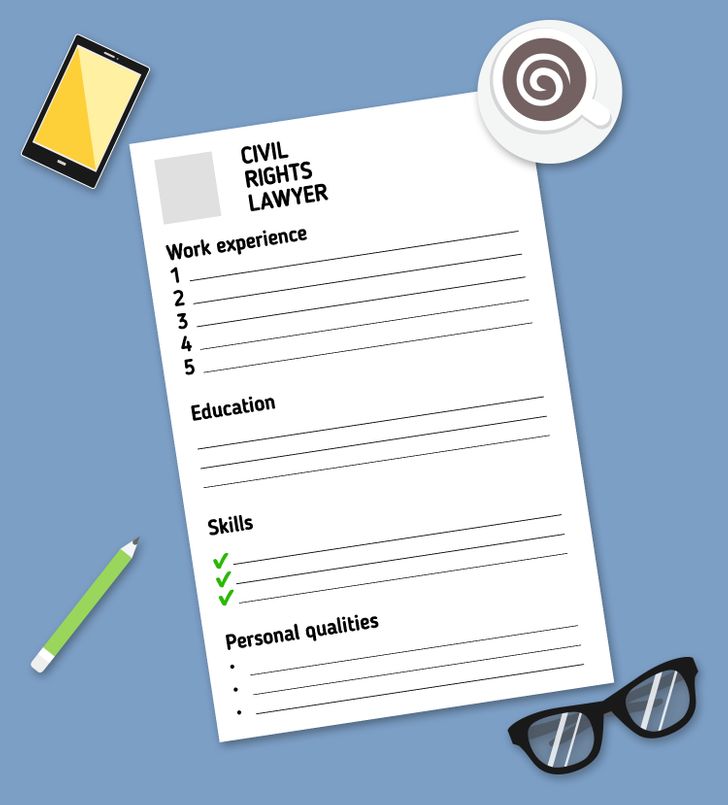
- A standard CV shouldn’t be longer than an A4-page. If you have a considerable amount of work experience, you can have 2 pages, but no more.
- Choose readable fonts and font sizes. The best fonts for a CV are Arial, Helvetica, or Times New Roman with a font size of 10-12 for the text and 14-16 for the title.
- Use bulleted lists for listing your skills, duties, and other things. They help structure the information in an easily readable way.
- Read the prepared CV. After you finish writing it, put it aside for 2-3 hours. Then, take it and scan it for typos. Or have a trusted friend take a look at it.
Work experience
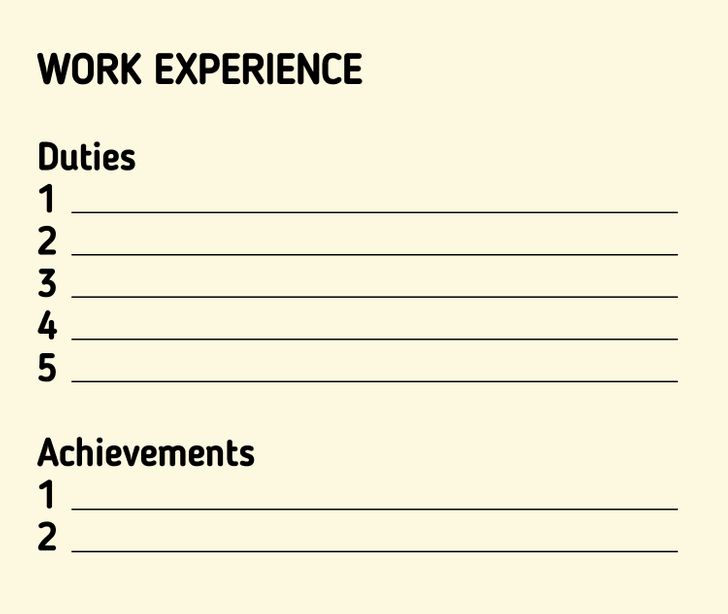
What to write about in this section:
- The experience related to the vacancy. If you want the job of a bookkeeper, talk about your experience in this field. If you don’t have any experience, talk about your practice in college and internships you’ve had. Describe the experience in reverse chronological order — first, start with the last company you worked for and finish with the first one.
- The names of the positions you had and the companies you worked for. Every description has to include the position you had, the name of the company, and the time period that you worked there.
- Goals and achievements. Briefly talk about 5-7 main duties you had and 2-3 results of your work. Use verbs for the descriptions. Like, “did,” “finished,” “completed.”
What not to write about:
- Why you left the job. Only talk about if you are asked at the interview.
- Unrelated job experience.
Education
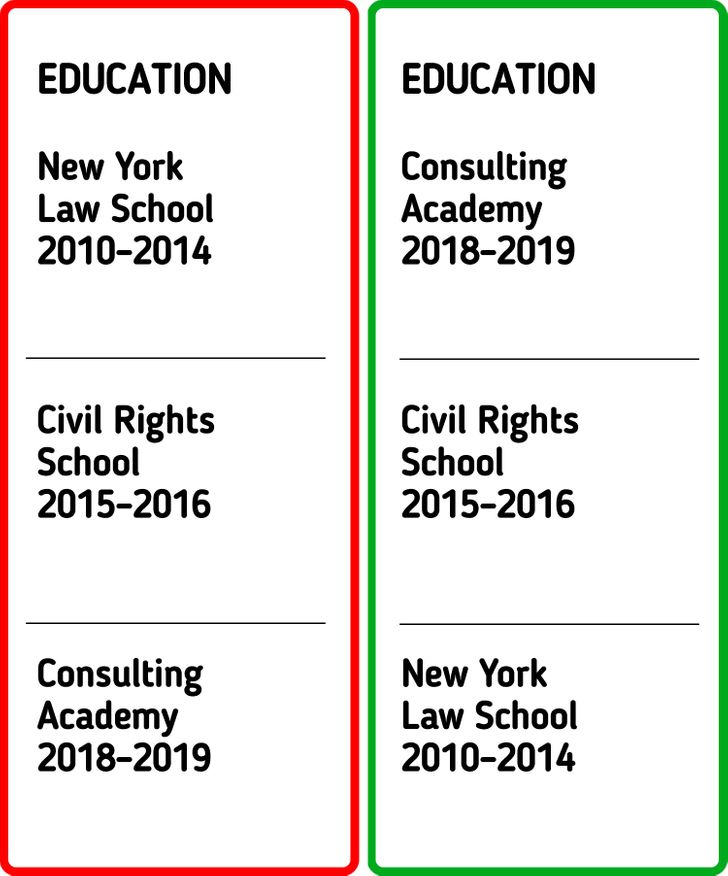
What to write about in this section:
- Where you studied and what your profession is. Write about the years of your studies, the name of the institution, and your profession. Just like work experience, the institutions should go in reverse chronological order.
- Achievements in your studies. If you don’t have a lot of work experience, take more about your educational achievements. Maybe, you’ve taken part in conferences, received awards, done some studies.
- Courses and classes. Talk only about the ones that have to do with the job you are trying to get.
Skills
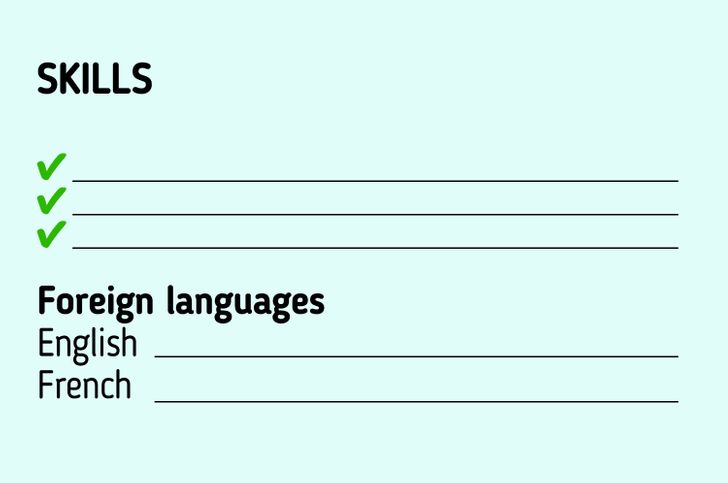
What to write about in this section:
- The skills and knowledge that has to do with the job. For example, an IT-developer can talk about the programming languages they know, a designer — about the software they can use and so on.
- Soft skills. There are hard skills and soft skills. The hard skills are those that help you do your actual job. The soft skills are those that make the end result even better. For example, the ability to manage a team, conduct negotiations, or plan your working day.
- Speaking foreign languages. Usually, people write the language they speak and there is a level of how well they do this — from A1 to C2. It couldn’t hurt to share how proficient you are at each of these things in the foreign language you speak: reading, translating text, talking, writing letters.
What not to write about:
- Obvious things. Maybe, 10 years ago, you could say that you could use a computer but today when everybody can, this information is not necessary.
- Personal qualities and hobbies. There’s a separate section for this.
Personal qualities
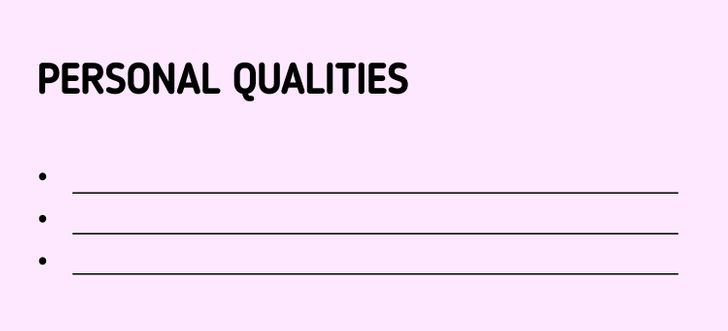
What to write about in this section:
- The qualities of your character that are related to a profession. Again, use verbs and exact phrases.
- Interests and personal achievements that are related to your position. For example, a journalist can talk about their personal blogs.
What not to write about:
- Hobbies that have nothing to do with the profession. Most employers don’t care if you are interested in Italian cuisine or going to the swimming pool. And if you have some dangerous hobbies like skydiving, this might even scare some employers.
CV photo
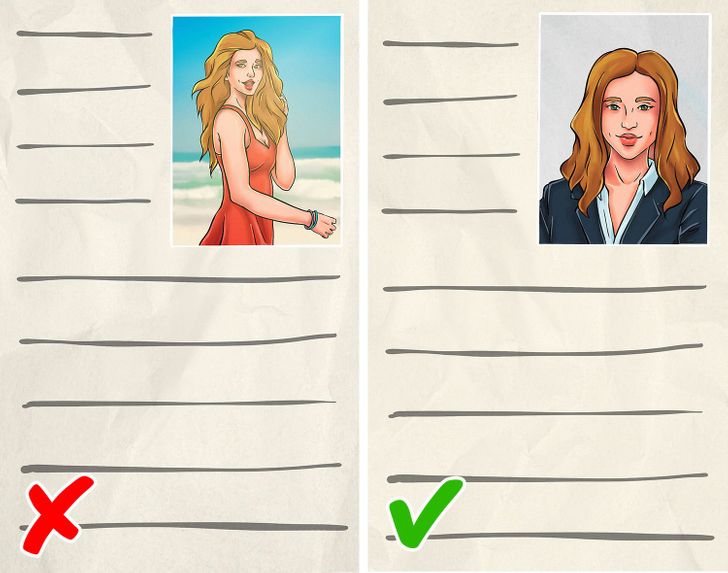
A good photograph will make your CV look different from everyone else’s. But be careful and choose the right photo. Don’t use any of your photos from vacation, restaurants, walking downtown, and so on. The best option is a professionally-done photograph of you wearing your work clothes.
Typical mistakes
- Don’t use the word CV in the title. An HR-employee already knows what this file is. The perfect title is the name of the position or your first and last name.
- Make sure your e-mail address looks professional. An employer will not take an address like kitty95@gmail.com seriously.
- Don’t write any personal information. Don’t include your home address or any details from your documents. The employer doesn’t need to know that right now.
Useful recommendations
- Choose a convenient file format. The universally accepted CV format is a PDF.
- Write your contact and personal information at the beginning of the CV. You need to write your last name, first name, phone number, e-mail, and a link to your social media page (if the page is about work). If it’s your personal page, don’t link it in the CV.
- Follow the correct order. CVs start with work experience. Then, education, skills, and personal qualities follow.
- Prepare a CV for every position you want. Don’t just write “bookkeeper, finance manager, auditor.” An employer might think that you don’t really know which job you want. It’s better to create 3 separate CVs and describe the exact skills and work experience each of the positions requires.